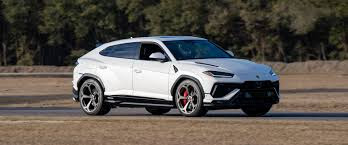In the world of high-performance automobiles, few vehicles have ever reached the legendary status of what is referred to as the Holy Trinity of hypercars. This hall of fame is granted to the Ferrari LaFerrari, the Porsche 918 Spyder, and the McLaren P1. Released in the early 2010s, these three hybrid hypercars redefined performance, pushing the limits of speed, technology, and design while showcasing each manufacturer's engineering expertise.
Ferrari’s contribution to the Holy Trinity, the LaFerrari, is a blend of power, elegance, and raw emotion. Enzo Ferrari's legacy is displayed within this machine that is powered by a naturally aspirated 6.3-liter V12 engine that screams to over 9,000 RPM. Paired with an electric motor, the LaFerrari produces a staggering 950 horsepower. However, Ferrari opted not to include an all-electric driving mode unlike the other two cars in this trio which most Ferrari enthusiasts appreciate. The symphony of its V12 is enough to turn heads from afar as it approaches those listening. With a top speed of over 217 mph and a 0-60 time of just 2.6 seconds, the LaFerrari is the ultimate expression of what real hypercar DNA is made of.
Miller, B. (2018, January 23). Laferrari Aperta review: What a 70th birthday present!. CAR Magazine. https://www.carmagazine.co.uk/car-reviews/ferrari/laferrari-aperta-2018-review/
Moving through the Holy Trinity, the Porsche 918 Spyder stands apart as the most technologically advanced of the three. This beast features a 4.6-liter V8 engine coupled with two electric motors delivering a combined 887 horsepower and an astonishing amount of instant torque. Its all wheel drive system allows it to plant this power to the pavement with ease. Making use of active aerodynamics, a 7-speed PDK transmission, and a full carbon fiber chassis, the Porsche 918 Spyder seamlessly blends efficiency with blistering performance, reaching 60 mph in just 2.5 seconds. A drive through the canyons could not be experienced in a manner quite like this hypercar which has made its legacy stand out for over a decade now.
Homer, T. (2018, November 30). Report: Porsche 918 successor Must Beat 6:30 Nurburgring Time. The Drive. https://www.thedrive.com/news/25236/porsche-says-918-hybrid-successor-must-beat-630-nurburgring-time
Completing this trifecta of revolutionary engineering, McLaren’s P1 was designed with one goal in mind—to be the ultimate driver’s car. Featuring a twin-turbocharged 3.8-liter V8 engine paired with an electric motor, the P1 produces a whopping 903 horsepower. The P1 leans heavily on its Formula 1-inspired technology with a last minute consideration of making it even legal for the streets. An advanced active aerodynamics system and suspension dampening system makes any racetrack its home. Reaching top speeds of 217 mph and a 0-60 time of 2.7 seconds, the P1 is a raw example of a driving machine that leaves you engaged as if you are one with the road.
Nehls, G. (2023, March 13). McLaren celebrates 10 years of the McLaren P1 hybrid hypercar. CompositesWorld. https://www.compositesworld.com/news/mclaren-celebrates-10-years-of-the-mclaren-p1-hybrid-hypercar
Though production of all three has long since ended, their impact on the automotive industry remains eternal with many supercars being inspired by their designs. When reaching the public in unprecedented fashion, it created a great hope for the future of exotics and those who see them as more than just metal, rubber, and wires —but rather high revving souls that come to life.







No comments:
Post a Comment